AMD finally unleashes new 7700 XT and 7800 XT mid-range GPUs
Taking the fight to Nvidia's RTX 4060 Ti and RTX 4070.
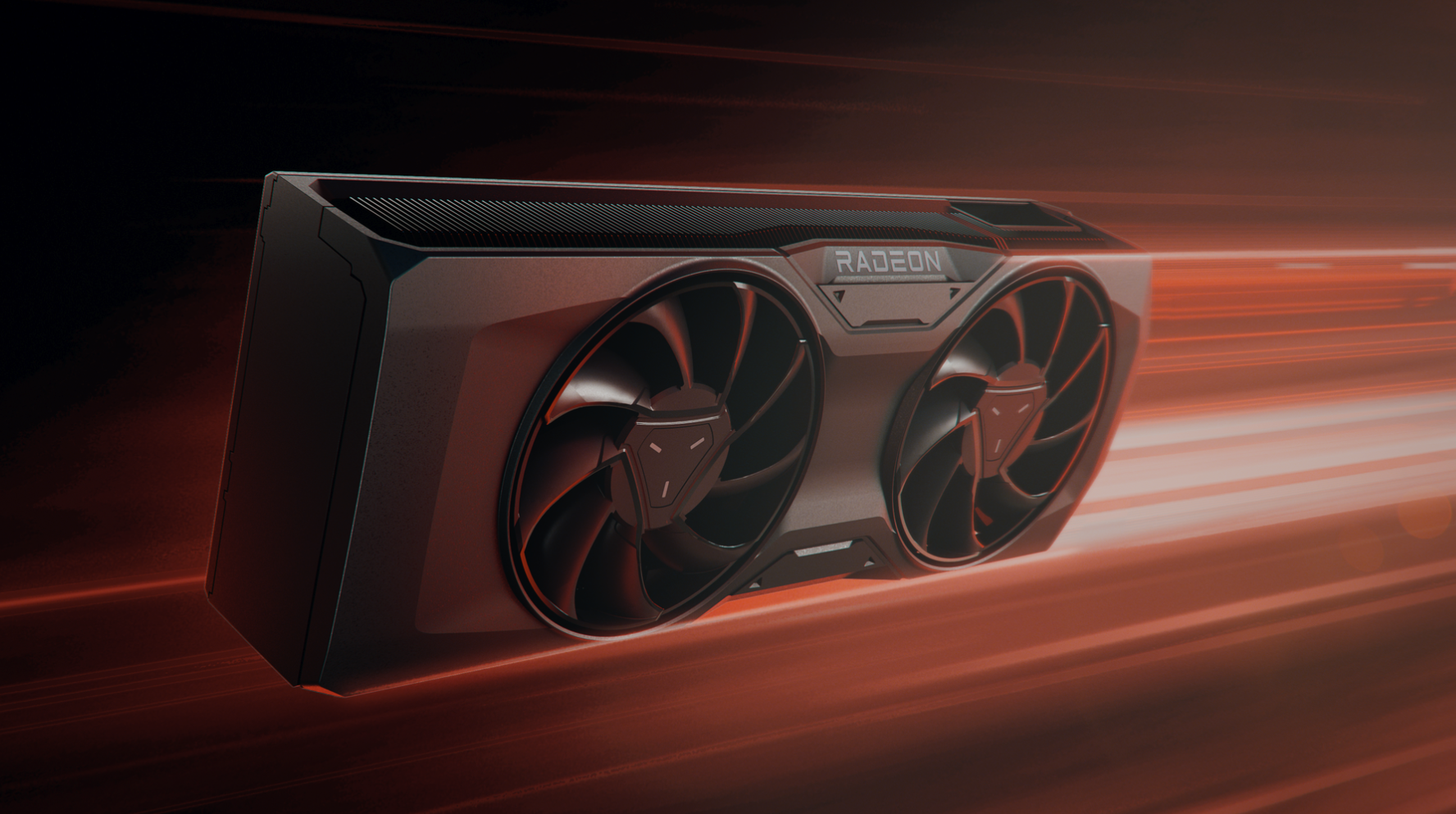
They've been an awfully long time coming. But AMD finally has some new GPUs to take on Nvidia in the meat of the mid-range gaming graphics card market. We give you the AMD Radeon RX 7700 XT and the AMD Radeon RX 7800 XT. Both GPUs will be available from September 6th for $449 and $499 respectively which is both better and worse than we were expecting.
Well, we say mid-range. These days "mid-range" means an awful lot of money. But hold that thought while we deal with the speeds and feeds of these important new GPUs.
Ultimately, the 7700 XT and 7800 XT are very much in line with the expectations generated by the incessant rumour mill. So, both are based on AMD's new Navi 32 GPU. Like the Navi 31 monster in the Radeon RX 7900 models, Navi 32 is a chiplet design with a main GCD die containing all the shaders and clever stuff which is surrounded by smaller MCDs with the memory controllers and cache.
Navi 32's GCD is inevitably smaller than that of Navi 31. And it likewise has fewer MCDs—at most four to Navi 31's six.
Anyway, it's the key numbers you want, so here we go. The 7700 XT rocks 54 RDNA 3 compute units for a grand total of 3,456 shaders or double that number if you subscribe to the double-pumped metric that sometimes applies to RDNA 3-based GPUs.
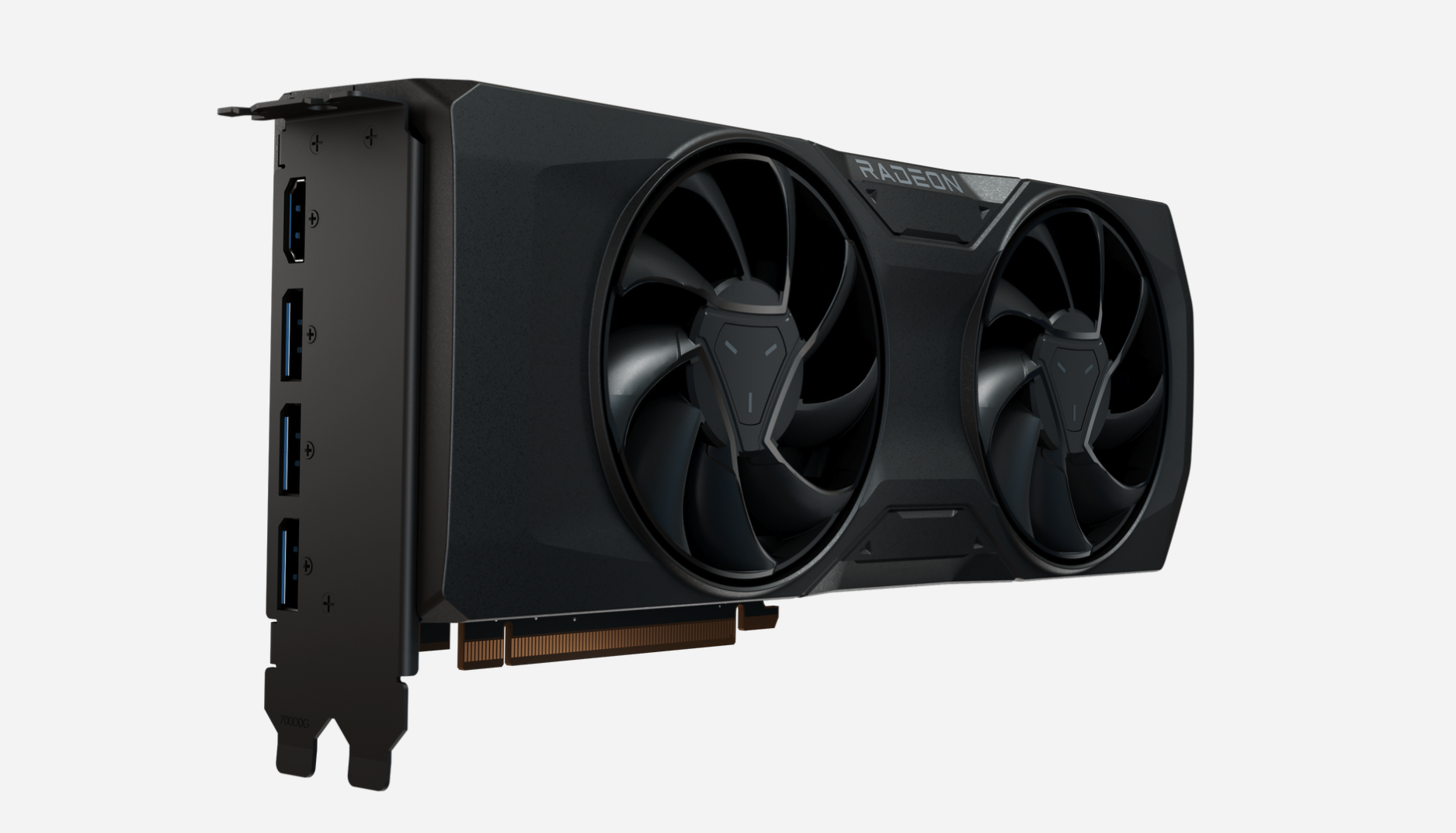
Either way, you get 12GB of 18Gbps VRAM running over a 192-bit bus for 432GB/s of bandwidth and 48MB of Infinity cache. As for clockspeed, you're looking at a boost clock of 2,544MHz.
As for the 7800 XT, the compute unit count rises to 60 and thus the shader count increases to 3,840 running at a boost clock of 2,430MHz. There's an extra MCD and thus a 256-bit bus enabling 624GB/s of bandwidth courtesy of 19.5Gbps VRAM modules. Oh and the Infinity cache is upped to 64MB.
Keep up to date with the most important stories and the best deals, as picked by the PC Gamer team.
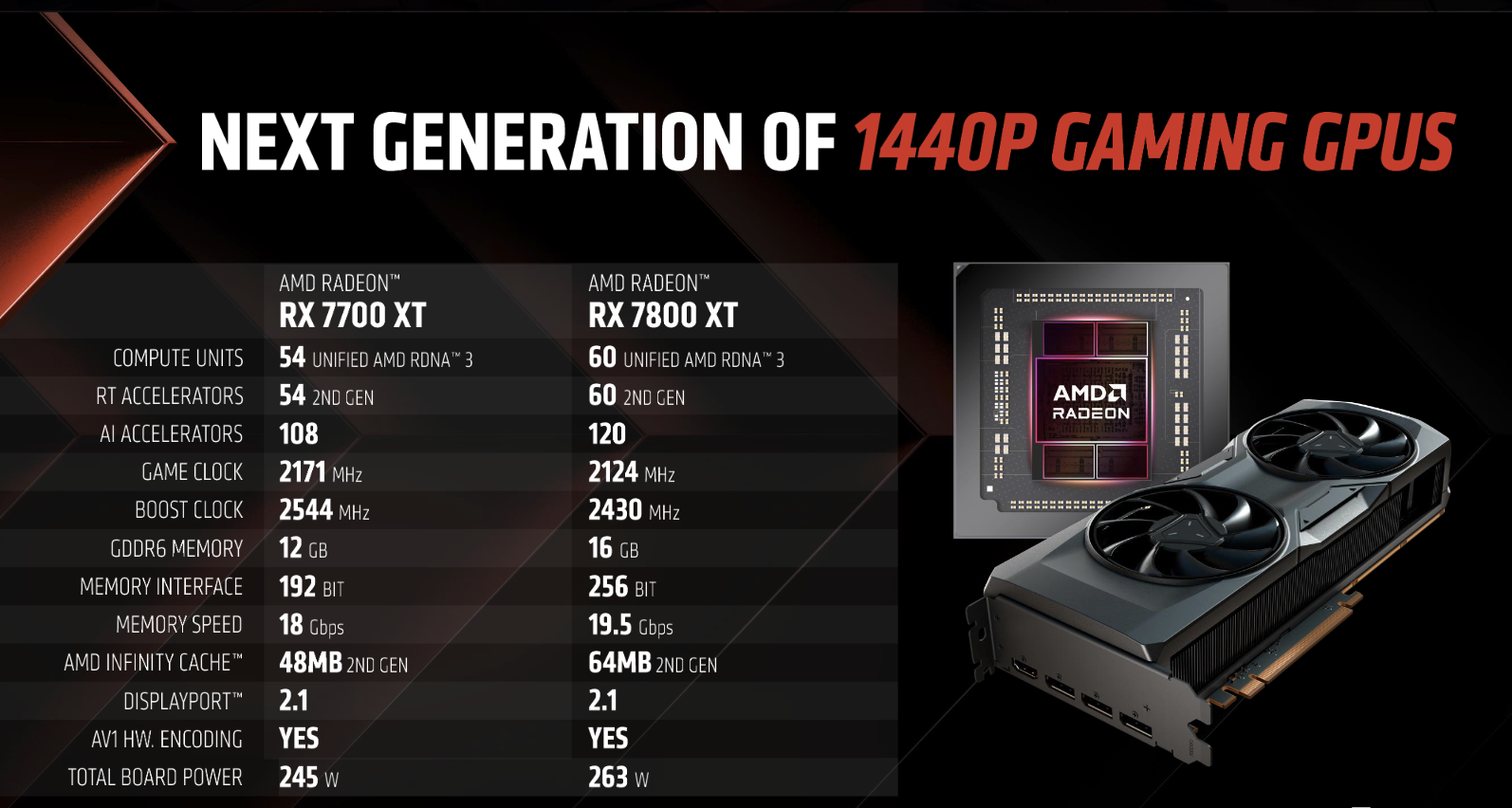
On first impression, perhaps the most notable aspect is just how close the two cards are. The 7700 XT looks every bit a 90 percenter on paper versus the 7800 XT. That's reflected in the modest gap in overall board power. The 7700 XT is rated 245W while the 7800 XT is only slightly higher at 263W.
That said, according to AMD's own performance numbers, the gap is a little bit bigger than that. In the Last of Us at 1440p, AMD reckons the 7800 XT is 22 percent faster. In Hogwarts Legacy at the same resolution, it's said to be 24 percent faster.
Speaking of 1440p, that's very much the target resolution for these boards according to AMD. And the target competition? That'll be the Nvidia RTX 4060 Ti for the 7700 XT, while the 7800 XT takes aim at the RTX 4070.
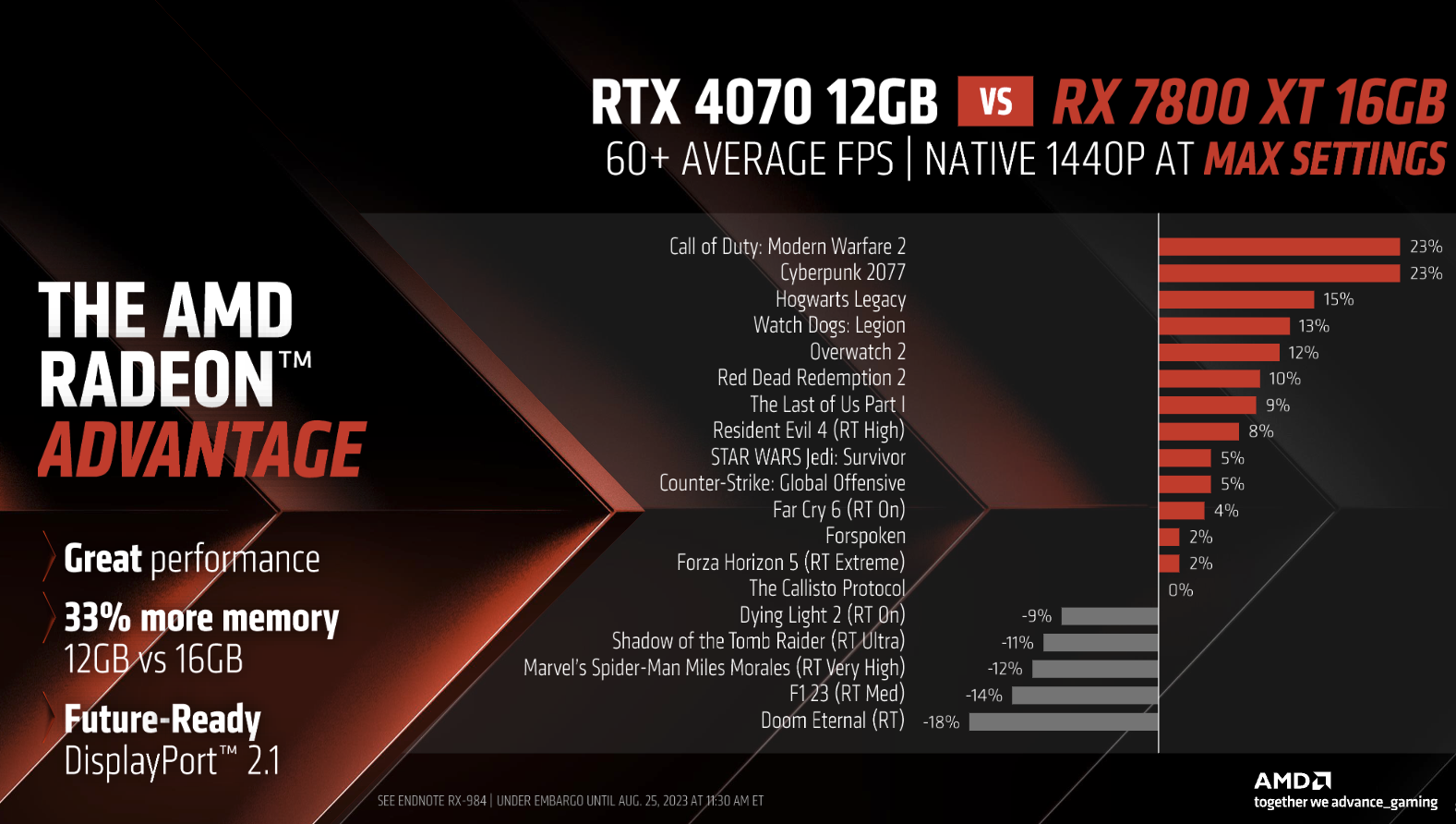
To that end, AMD shows the 7800 XT beating the 4070 in most games by margins of up to 23 percent. It even claims the 7800 XT has the edge with ray tracing enabled in a few titles, including Resident Evil 4 and Far Cry 6.
However, according to AMD it's the 7700 XT that really tears Nvidia a new one, hammering it by up 31 percent and only losing by a small margin in two out of 19 games including in its benchmarks. These are all native performance numbers rather than with FSR or DLSS scaling enabled. And they will, presumably, have been selected to show AMD's new GPUs in the best possible light.
Still, one thing is for sure. These AMD GPUs have a clear advantage in VRAM allocation and memory bandwidth. The base RTX 4060 Ti only offers 8GB over a 128-bit bus (or 16GB for a huge $100 premium and still at a bandwidth disadvantage), while the RTX 4070 makes do with 12GB over a 192-bit bus.
Notably, AMD did not provide any comparison numbers with previous generation Radeon RX 6000 Series GPUs. That may be because AMD has gotten itself into something of a pickle over branding.

With the previous gen, the 6800XT was the second-tier card based on the same Navi 31 GPU as the 6900 XT. But this time around, AMD has two 7900-based boards, and the 7800 XT drops down a tier. So, it's arguably more comparable with the 6800 vanilla than the 6800 XT.
Even then, the old 6800 vanilla matches the new 7800 XT for CU count, leaving the new GPU to make the difference with its higher boost clock ( 2,430MHz versus 2,105MHz) and enhanced architecture.
That said, the 7700 XT is a clearer win over the old 6700 XT and 6750 XT. Those GPUs only had 40 CUs, though they actually both run very slightly faster boost clocks than the new GPUs.
All told, it doesn't look like the new GPUs will be offering a really substantial uplift in raw GPU performance. But then nor do Nvidia's mid-range GPUs compared to their direct predecessors.
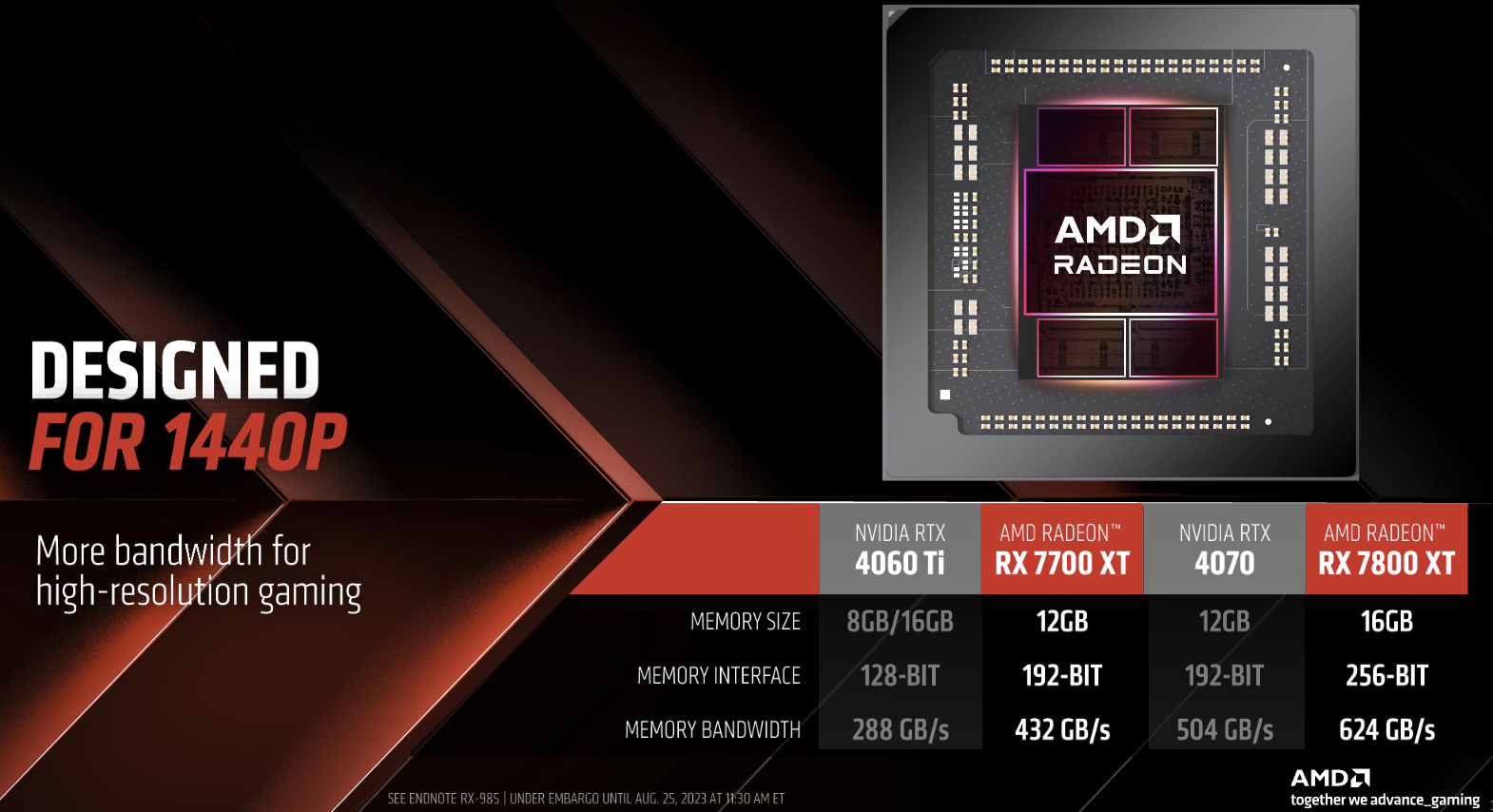
AMD is also detailing its FSR 3 scaling tech including AMD Fluid Motions Frames, the latter being AMD's belated answer to Nvidia's Frame Generation feature in DLSS 3.
AMD didn't include a great deal of detail on FSR 3 and it's not totally clear exactly when it will be available, with AMD only saying that it's coming soon in Q1 next year. But AMD did claim that performance on the 7800 XT in Forspoken at 4K ultra high RT preset increases from 36fps without FSR to 122fps with FSR 3 and Fluid Motion Frames.
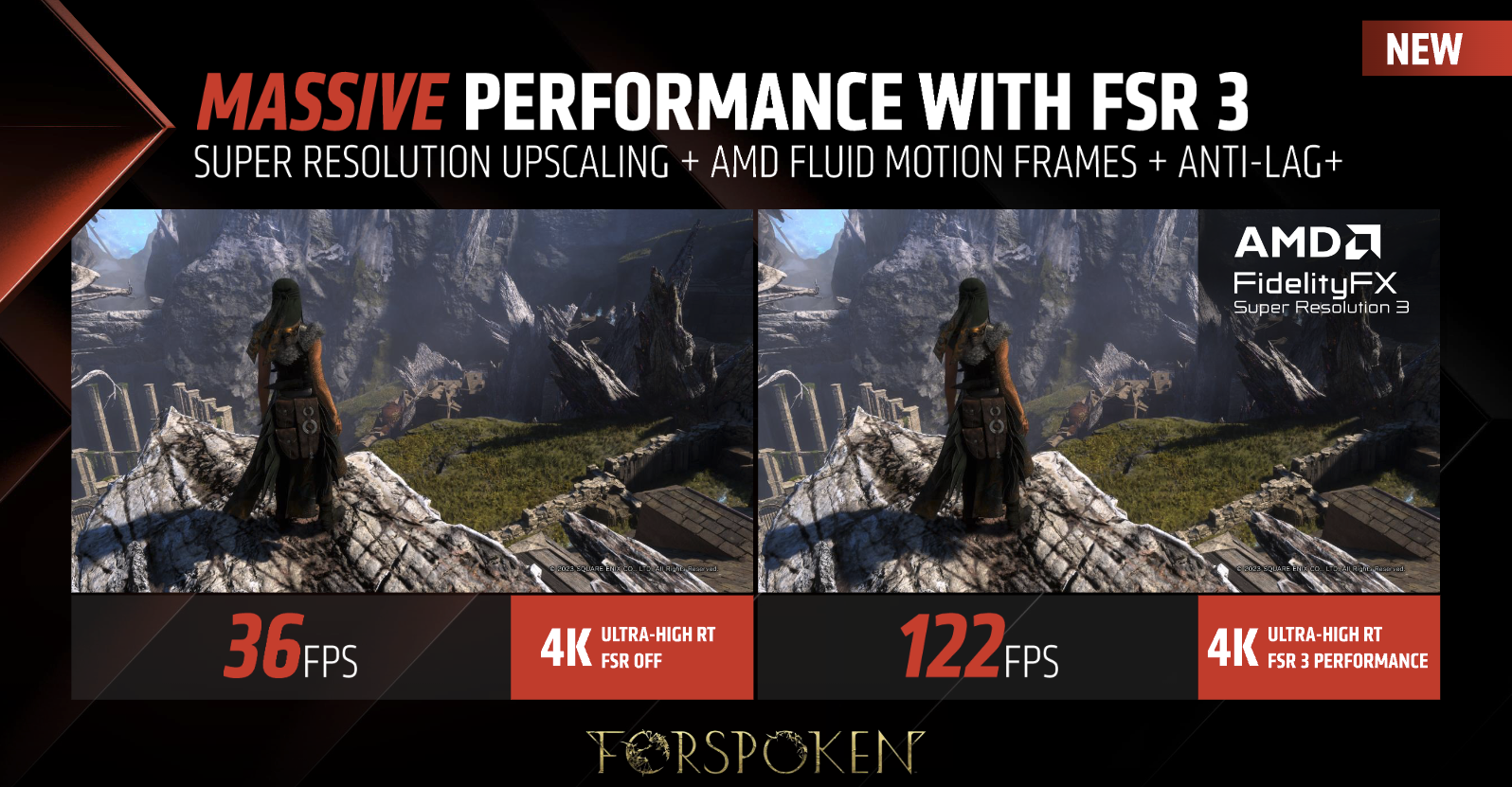
So, that's a pretty major leap and commensurate to the kind of gains you get with DLSS and Frame Gen. The real test, of course, will be image quality. How will AMD's fake frames compare to Nvidia's fake frame?

Best CPU for gaming: The top chips from Intel and AMD
Best gaming motherboard: The right boards
Best graphics card: Your perfect pixel-pusher awaits
Best SSD for gaming: Get into the game ahead of the rest
All of which just leaves the sordid—and let's be honest, totally critical—matter of money. How much do these GPUs cost? Rather ludicrously, AMD kept that a secret until literally 30 minutes before it lifted the NDA on the rest of the details.
Whether that reflects uncertainty or an attempt to limit negative coverage is unclear. But either way, the $449 price of the 7700XT feel too close to the $499 price of the 7800XT, just as the 7900 XT at $899 felt too close to the 7900 XTX at $999.
To an extent, AMD was probably limited in how high it could go with the 7800 XT given the prices that last gen RX 6800s currently go for. At $499, the 7800 XT looks potentially very appealing. But the 7700 XT for only $50 less is a disappointment. Priced at $399 to go head on with an RTX 4060 Ti? Now that would have been interesting. But then a GPU with disappointing pricing is pretty much par for the course.

Jeremy has been writing about technology and PCs since the 90nm Netburst era (Google it!) and enjoys nothing more than a serious dissertation on the finer points of monitor input lag and overshoot followed by a forensic examination of advanced lithography. Or maybe he just likes machines that go “ping!” He also has a thing for tennis and cars.

